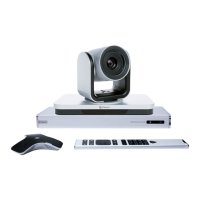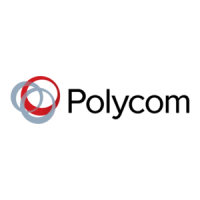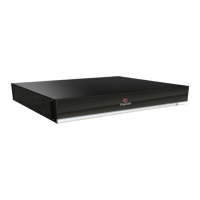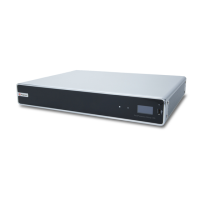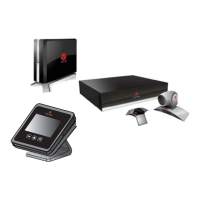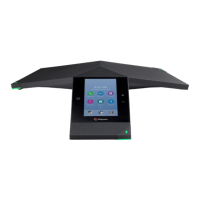Setting Description
NAT Configuration Specifies if the system automatically determines
the NAT public (WAN) address.
▪ If the system isn’t behind a NAT or is connected
to the network through a VPN, set this option to
Off.
▪ If the system is behind a NAT that allows HTTP
traffic, set this option to Auto.
▪ If the system is behind a NAT that doesn’t allow
HTTP traffic, set this option to Manual.
NAT Public (WAN) Address The address callers from outside the LAN use to
call your system. If you configured the NAT
manually, enter the NAT public address here.
You can configure this option only when you set
NAT Configuration to Manual.
NAT is H.323 Compatible Identifies whether the system is behind a NAT that
can translate H.323 traffic.
This option is available only when you set NAT
Configuration to Auto or Manual.
Address Displayed in Global Directory Choose whether to display the system’s public or
private address in the global directory.
This option is available only when you set NAT
Configuration to Auto or Manual.
Enable SIP Keep-Alive Messages Specifies whether to regularly transmit keep-alive
messages on the SIP signaling channel and on
RTP sessions part of SIP calls. Keep-alive
messages maintain connections through
firewall/NAT devices that are often used at network
edges.
If your system is in an Avaya SIP environment,
Polycom recommends that you disable this setting
to enable calls to fully connect.
6. Select Save.
Web Proxies
A web proxy can help your G7500 system communicate outside your network securely and with
increased performance. For example, you can direct your system’s outbound requests through an
enterprise proxy.
You can configure your system to use a proxy one of the following ways:
▪ Automatic: You specify only the proxy credentials (if needed). Using DHCP, your system obtains a
URL to automatically download a proxy auto-configuration (PAC) file.
Securing the System
Polycom, Inc. 58

